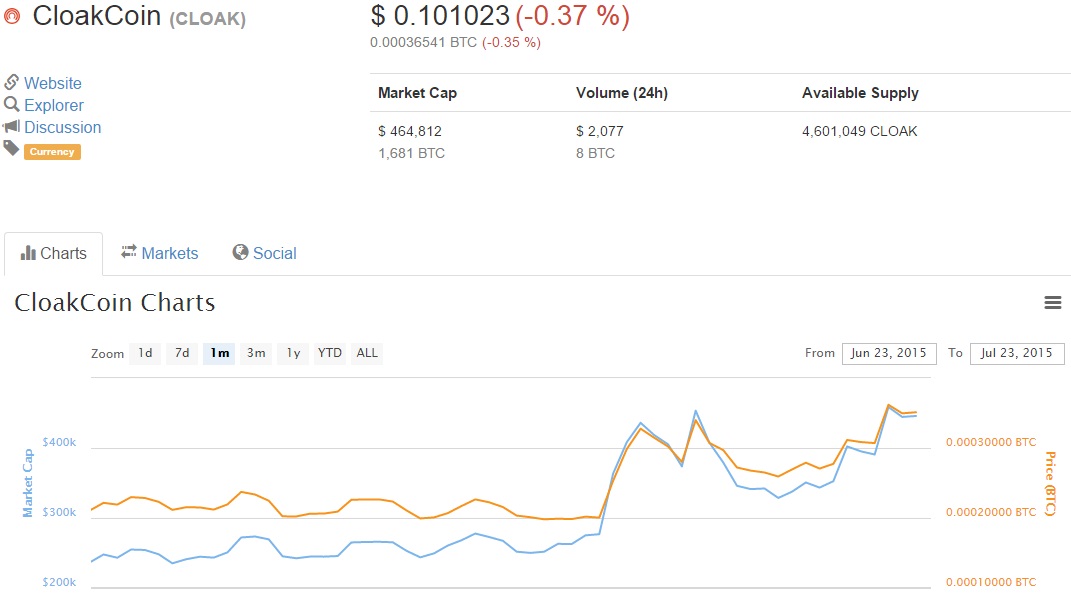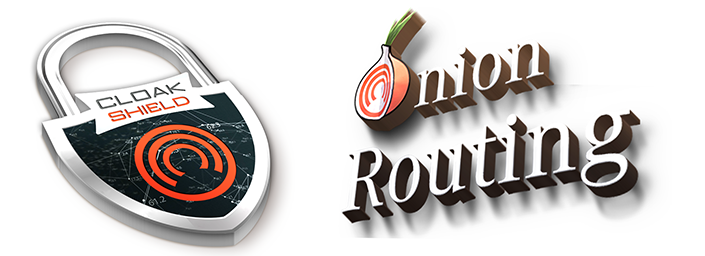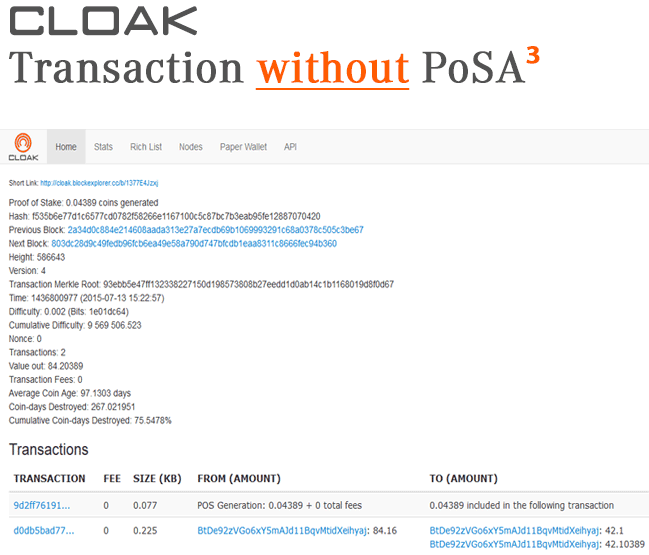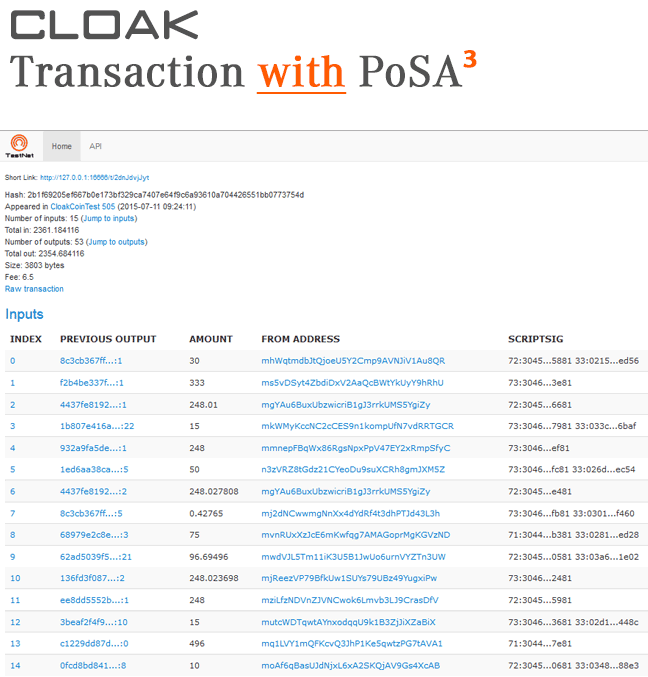[Original article from Cointelegraph Germany]
Cointelegraph spoke with Cloak team member Cashmen about overcoming the initial pump and dump by the original team, resurrecting CloakCoin, transitioning from proof-of-work mining to proof-of-stake, and its upcoming "PoSA3" release.
The Story of CloakCoin
In mid-2014, the first wave of cryptocurrencies similar to bitcoin but with improved anonymization features came on the market. CLOAK or CloakCoin, was one of the first and most promising projects. The price of cloak shot up reaching nearly US$6 million in market capitalization and a price of US$11.5 dollars per cloak.
What followed, however, was a sudden crash. There were rumours that one of the many "pump and dump" groups had driven up the price and then cashed out, crashing the market. The development team was also apparently unable to cope and finally announced in October 2014 that they were leaving the project completely.

A new team lead by the Bitcointalk user Cashmen ("c4shm3n") then took over the abandoned project. The coin languished for several months with a market cap of less than €30 thousand at times. In March 2015, a casual remark from a staff member of the Deep Web market "Evolution," whose leaders had made off with more than 40,000 bitcoin, brought new attention to Cloak.
When asked how users could prevent similar fraudulent events in the future, he said the answer was "Decentralized Market Fund projects: such as CloakCoin and their Market, they are the only way for this to work."
Cointelegraph: Cloak has had a turbulent history. How long have you been in the Cloak project and how did you become involved?
Cashmen: I am in Cloak since the proof-of-work/mining phase ended. I invested approximately at the end of July 2014. I took over control of the Cloak project on October 14, 2014. Alty, the former leader, said that he did not want to continue the project and agreed to let me take it on. I, like many others, saw a lot of potential in Cloak and thought the ideas from the previous developers sounded very promising. That's why I made a significant investment in Cloak.
When the pump and dump was over, my expensive cloaks had lost a tremendous amount of value. I contacted Alty and said that as a big investor, one of the last who has not yet sold off its credits, would like to take over the abandoned project.
CT: Do you have an IT background? Are you a programmer?
C: I got interested in Bitcoin soon after its inception and I’ve been involved with crypto since 2010. I mined my first bitcoins with a graphics card and have accumulated a lot of experience in the crypto field. Professionally, I'm not a programmer, but computers have always been a hobby of mine. I have previously worked actively with Quarkcoin and several other projects. In the crypto scene I am mainly known for my work with Quarkcoin. Since becoming in involved in Cloak, I have concentrated totally on CloakCoin, rather than QuarkCoin.
“[In] the Cloak community remained only those who knew nothing of the pump and dump scam.”
CT: You had to build a new team? What was it like and how many developers are now the core team on board?
C: The entire old team sold all their entire cloak and went to ShadowCash (SDC), including Alty, its biggest investors and Alty’s coder, who was a paid contractor rather than part of the Cloak team.
Cloak never had its own coders before we took over. In the Cloak community remained only those who knew nothing of the pump and dump scam, like me, Indigo, our new chief developer, other team members and many other Cloak investors.
Yes, I had to build a team. However, it was not difficult, as many were still keeping hold of their Cloak investment and were very keen to make up for their big losses. So we sat down with a few people and started planning how to make good on the promises made by Alty and the old team. Miraculously, it transpired that Indigo is an experienced and talented coder and he offered us his help to get the Cloak project off the ground again, and I got the old CloakCoin source code from Alty.
The source code was not as we expected, and to quote our recent announcement:
"The previous team were kind enough to hand over the existing codebase and had created the impression that PoSA3 was already complete, and only [needed] a few tweaks and bug fixes. Many of you know that that was not the case!"
We were told the PoSA3 project was complete, but this was not so. The code was messy, broken and incomplete. When I asked Alty about it, I never received an answer. He had said everything was almost done, but nothing was done, not even 10%. So we thought about it as a group for some time and came up with a plan to re-imagine a trustless, anonymous payment transfer system for cloak that would form the backbone of the new Cloak project and spent many months designing and developing it.
“We had to do everything from scratch, the team concept, the code, etc. Only the name has stuck.”

CT: So basically, a complete new beginning?
C: Yes. None of the old team, who stayed, they left with the loot. There remained only a shell. We had to do everything from scratch, the team concept, the code, etc. Only the name has stuck. We also considered whether or not we should rebrand CloakCoin, but we decided against it because I knew Cloak had great potential and a bad image is better than none. The name didn’t fail, the old team did, the people who tried to make it originally, before they left for ShadowCash.
CT: Why did you not connect with one of the other projects such as Dash (formerly Darkcoin) or Monero? Only because of investments or for technical reasons?
C: I became invested initially because I found the idea of Cloak very promising and exciting, and wanted to see it realized, especially the “trustless anonymous” transactions. Being able to exchange cloak coins anonymously without having to trust a third party with those coins is very useful feature but very hard to do well.
The additional promise of the OneMarket marketplace made Cloak a winner for me. Taking over the project would enable me to steer the ship in the right direction, and move away from Cloak’s troubled history to focus on its true world-changing potential. Retaining control is important to ensure that the project doesn’t stray off course, and I had been rather disappointed before with the old developers and it was hard to trust coins and developers after my previous experience.
CT: That's understandable. To outsiders, the debate on the "right anonymization solution" can be difficult to follow, as it quickly becomes very technical. In addition, there is a certain animosity between the various competing communities. Can you briefly explain what particularly makes Cloak different?
C: We for example, have no master node. Each wallet — so every Cloaker — acts like a master node and receives rewards for assisting with Cloaking. There is no minimum balance requirement to be able to assist and earn either, due to Cloak’s PoSA3 being “trustless,” which means other users are never trusted with your coins, so they cannot steal them.
“[Cloak has] Cloak-Shield and onion routing such as is used in the TOR network in order to have a fully encrypted traffic on the Cloak network.”
In addition to a tailor-made off-blockchain mixing system, we also have Cloak-Shield and onion routing (such as is used in the TOR network) in order to have a fully encrypted traffic on the Cloak network. This provides an extra layer of protection against hackers trying to hack the network or attempting to identify and monitor Cloak users.
Combined with our planned PoS (proof-of-stake) changes, the PoSA system is being upgraded so that Cloak users are rewarded extra PoS interest (free cloak, like interest on a savings account) for sending and cloaking (disguising transactions and mixing/tumbling coins).

PoSA transactions resemble CoinJoin transactions on the blockchain, together with additional obfuscation, precisely in order to "cloak" or disguise the sender and recipient. A PoSa transaction indicates that many coins were sent to many addresses with matching amounts, but it is impossible to determine which of these inputs and outputs are "real."
This makes PoSA similar to Dash or CryptoNote coins in terms of anonymity, but it does not require the master nodes or ring signatures and works in default blockchain format. PoSA also rewards users who help to “cloak” transactions, with free cloaks as a reward for their assistance.
CT: What are the key features of CloakCoins? It's now a proof-of-stake coin. How many are there and what is the inflation rate?
C: There was a POW-phase (7 days) total of 4.4 million coins mined. Cloak is now in the PoS phase and has an inflation rate of 6% per year. The number is 6%, but not exact because not all wallets are staking, e.g., the currency exchanges. The minimum age to stake is 3 hours. A maximum age does not exist. Cloak uses the X13 algorithm, blocks take 60 seconds to confirm (60 seconds before a send is verified). Currently there are a total of 4.598 million CloakCoins.
“Everyone benefits — those who run their wallet for Cloaking and Staking and those who want to send their transactions anonymously.”
CT: So you earn cloaks by helping to mix transactions as well as through staking?
C: That’s right. The PoSA3 sender pays a PoSA fee of 1.8% of the transaction amount. This 1.8% is used to reward those who helped mix the transaction. So when a user sends 100 cloak, he pays 1.8 cloak as a fee. This is then shared between the cloakers that helped to mix/anonymize the transaction, so everyone benefits — those who run their wallet for cloaking and staking and those who want to send their transactions anonymously.
CT: The transmitter must therefore decide how many cloakers he wants to use?
C: Yes, but not only that, the PoSA system also allows control over “splits,” which controls how many copies of the real inputs and outputs the cloakers supply when cloaking/mixing. This increases the number of addresses in the transaction and makes things even more complex for anyone trying to de-anonymize the inputs and output, so it is even more difficult to trace.
If you send coins, for example, with 10 Cloakers who mix for you, and view the PoSA transaction in the block explorer, you see at least 10 addresses in the output, but if you use 10 cloakers and then 10 splits, then you will see 100 addresses in the output. A combination of existing and new change addresses are used to further hamper attempts to trace the “cloaked” PoSA3 transaction. For the final release of the wallet, the wallet will auto-select the best possible settings for cloaking.


CT: For ordinary users, is there a reason for Staking and Cloaking and what practical difference is there to changing the number of Cloakers and splits? And have you considered just offering an anonymous send — yes/no option?
C: A regular user will benefit from the rewards from the 1.8% transaction fee. There is no disadvantage for him. The staking is not affected by the rewards, so you can do both simultaneously. The more Cloakers and splits one uses, the better. The user will not have to worry about this though, as it will be automated for the “live’” network release.
CT: Can you tell us a little more about the code audit you are planning?
C: Yes, on July 15 we started the Public RC1 (Release Candidate #1) testing of PoSA3 Wallets in Testnet. This will allow everyone to test using ‘test’ Cloak coins and report any problems or issues. If this test is successful, we will release this version of the wallet on the “live” blockchain. But let us first be 100% sure that everything is perfect. This is why we want to test everything thoroughly on the TestNet (test network) before releasing onto the “live” CloakCoin network. The safety of our community and users is very important to us.
The security audit of the code is already underway and will continue throughout this testing period, as there is a considerable amount of code to audit, we decided to save time and get started with the audit. It is currently not possible to determine the exact date for the Live Wallet or the publication of the audit. However, we will, as always, keep the community up to date.
[UPDATE: I would like to share the great news that we have just now received word from our auditor that the PoSA Security Audit was successful! He is currently finalizing his report, which we will be publishing for the Cloak community very soon.]
CT: What are the plans for OneMarket, CloakCoins’s decentralized marketplace?
C: The ideas and plans for the decentralized market place are there, but I do not want to go too much into the details right now. We are currently working highly concentrated on PoSA3 and once it is running safely and stably, we will sit down together as a team and get down to work and devise a concrete concept.
We already have much of it planned. It’s just a case of refining the workflow. We will then publish a Whitepaper, but this will be after the PoSA3 launch. Big promises to do everything at once is precisely why the previous team failed. We focus on delivering something that works perfectly, in a realistic and reasonable timeframe.
